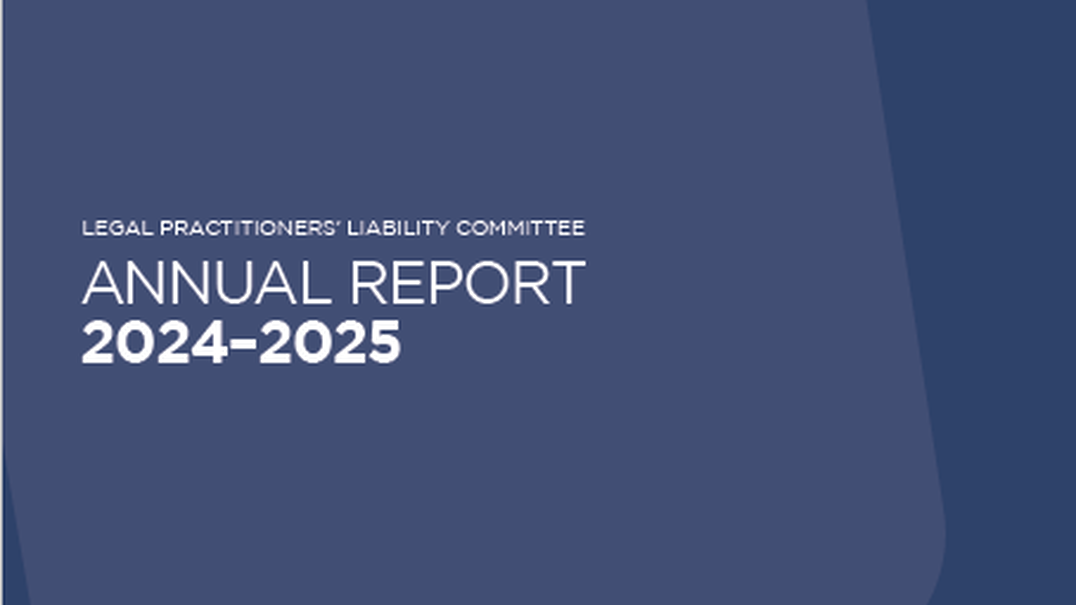Legal technology can help legal practitioners to manage risk, but finding the right technology to fit their needs is crucial.
Risk management in legal practice can be enhanced with the use of technology, and the good news is that it need not be complex or high-tech to be effective. While an ever-expanding range of legal tech tools is being offered to practitioners, not every firm needs to adopt artificial intelligence (AI) or advanced analytics to reduce risk.
Some of the most reliable tools are the simplest, like a spreadsheet checklist or a recurring calendar reminder. The key is to find the right level of technology that fits your firm’s needs, budget and capabilities, and to keep developing technological skills and knowledge to stay current.
Low-tech solutions: Simple tools, strong foundations
Fancy software is not a prerequisite for firms and practitioners to manage risk well – many effective solutions are already at their fingertips. Tools such as the Microsoft Office suite can achieve great results when used with purpose and consistency. These tools may seem basic, but when used consistently and centrally managed, they build strong habits and help embed risk management into everyday work.
Application
- Checklists: Start by using a checklist at the outset of each matter to ensure client instructions are complete. A simple Word or Excel document can provide prompts to ask the right questions and capture all the information necessary to provide accurate legal advice. Checklists can help reduce the risk of overlooking important questions and ensure that practitioners are not giving advice based on incomplete or unclear instructions. Saving a completed checklist to the file creates a record of what was asked and answered, which can be invaluable if a problem later arises
- Templates: Consider using template advice letters or precedents created in Word. Templates support consistent, comprehensive communication with clients. They also reduce the risk of omitting important warnings or explanations critical for client understanding and professional protection.
- Calendars: Outlook calendar reminders are an easy way to stay on top of workflow and key deadlines. Colour-coded categories can be used to group reminders by file type or urgency. These prompts can help catch potential oversights before they turn into serious issues.
Hot tip #1
Assign responsibility for maintaining checklists and templates to a team member, because risk management only works when someone makes sure the system keeps running.
Medium-tech solutions: Smarter, no-fuss systems
Medium-tech tools offer more structure and automation than basic checklists – but without the complexity of high-end systems. Practice management systems offer a wide variety of solutions that are bundled together in one platform. Task lists, document control and client intake forms are excellent examples of these medium-tech solutions. The good news is that these technology solutions are available off the shelf and are designed for users with basic technology skills.
Application
- Legal practice management software (LPMS): Most LPMS includes task lists, built-in workflows and deadline tracking. These systems help ensure that critical steps are not overlooked and provide oversight of how matters are advancing. A key component of practice management platforms is the ability to centralise data storage. This allows team members to collaborate on documents, maintain version control and track who has completed which tasks. These are essential features for managing risks in busy practices.
- Online forms: Forms are another popular medium-tech solution that can gather initial information from clients, guide them through a specific process or provide instructions on their case. Many practice management platforms can create and distribute online client instruction sheets. There is also a myriad secure online intake form products available to lawyers on a subscription basis.
Hot tip #2
Start with one step in the work process, such as client intake or file closure, and find a medium-tech tool to streamline and safeguard that process. Once comfortable with that, move on to more sophisticated applications of the technology.
High-tech solutions: Proactive, intelligent risk management
For firms ready to invest in high-tech tools, there are now powerful ways to manage risk in real time. These solutions use automation, analytics and AI to detect issues early and support better decision making.
Application
- Practice management systems: Some advanced practice management systems use AI to monitor file activity and flag unusual patterns like a delay in client communication or missing key steps in a workflow. These tools act like a digital second set of eyes, catching potential issues in real time.
- Predictive analytics: Analytics can highlight the matters that are more likely to go off track based on the file type, timeline or past issues.
- Natural language processing (NLP): NLP tools can scan emails or file notes for tone, urgency or signs of client dissatisfaction. These types of tools give early warnings of a potential problem. Some platforms also integrate compliance tracking, continuing professional development monitoring and risk dashboards into a single interface, making it easier for leaders to see where risks are building across the firm.
Hot tip #3
Pilot high-tech tools with one team or practice area before rolling them out firm wide. These tools require a consistent set of data, strong processes and well-trained staff, so it is important to ensure these basic foundations are in place before introducing them. Leaders within the firm must lead from the front, learning and using the relevant tools themselves.
Right-size your risk tech
The best risk management tool is not necessarily the most expensive or advanced. Rather, it is the one the team will actually use. Firms need not jump straight into high-tech solutions to see real benefits. Starting with a well-used spreadsheet or a basic workflow template can lay the foundation for more sophisticated systems down the line. What matters most is consistency, clarity and ease of use. Technology should support your people, not overwhelm them.
If practitioners and firms look at where risks arise in their practice and assess what their team needs, this can help them to choose tools that fit both the workflow and the team’s level of comfort with tech. Small, practical steps – done well – are often the smartest way to build a lower-risk practice. Whether it is a simple checklist, a structured workflow or a smart AI assistant, the goal is the same – to make risk management part of everyday legal practice.



